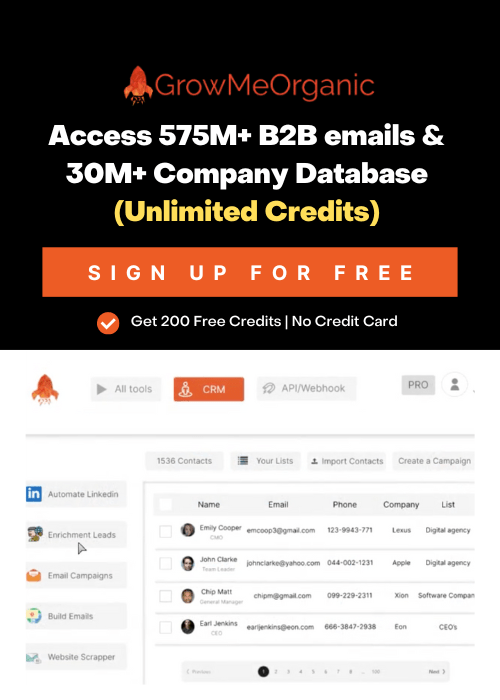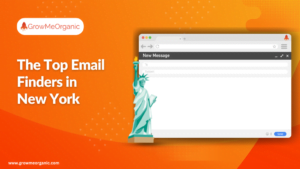Do you know that email marketing gives an ROI of $36 per $1? That’s a whopping 3600%! It doesn’t sound like what you’re currently getting for your email outreach efforts, right?
So, why are you not enjoying the full benefits of your email marketing campaigns despite following best practices? Why are you getting so few results after putting in so much?
The answer is simple – you’ve ignored UX design principles in your email marketing. Applying user experience design concepts in your email marketing strategy is a game-changer.
Keep reading if:
- You’re tired of seeing little results for your huge email marketing endeavors.
- You want to know how to improve your email campaigns with user experience design best practices.
- You’re eager to know the benefits of using UX design to boost your email outreach efforts,
At the end of this article, you’ll know exactly what to do to start getting 3600% ROI on your email campaigns.
Why you need to involve UX designers in your email campaigns

UX designers are vital to successful email marketing campaigns. That’s why knowing where to find the top UX designers to hire is important. Designers worth their salt will not only design a great product, but they’ll also add value to your email campaigns.
Don’t be tempted to think the UX designer’s job is done when the app or website design is complete. You need UX designers’ input in your email campaigns.
It’s a no-brainer – these professionals designed the product and understood the user more than anyone on the team. Having them contribute to your email campaign will deliver better results.
8 ways to use UX design best practices for improved email campaigns
Have you heard of door handles that automatically sanitize your hands once you touch them? If you don’t know about this extra function, you’ll get into a building with these handles and ask for a sanitizer.
It’s the same with user experience design. Most people think it’s strictly for websites and apps; meanwhile, it applies to everything related to user experience, like emails. Email automation ideas are brilliant, but you must marry them with user experience design principles for the best results. Here are 8 ways to leverage these design principles for enhanced email campaigns.
1. Understand your user
In user experience design, the user is king. Every action is taken with the user in mind. This should not be different in your email efforts. You’re reaching out to the user. The product you’re selling is for the user, so make your emails about them too.
Understanding your user is very critical to planning an email campaign. From knowing where to reach them to crafting effective email content, understanding the user is valuable.
Knowing their needs, pain points, feelings, ambitions, and goals helps you reach out to them more personally. You’ll be speaking to them from a relatable point of view; therefore, they will respond better to your campaigns.
2. Practice usability
Usability is a key element in user experience design. It is applied to design so the user can use the product efficiently. This is also applicable to email campaigns. For example, how easily can the user read the email and click the call-to-action (CTA) button? Designing your emails with usability in mind gives the user a great experience.
3. Personalize the tone
Let your users see themselves in the email’s language, phrasing, and structure. Each user’s experience is personal, so creating a generic message will defeat the purpose. You want the reader to feel special. You want them to feel you woke up, thought of them, and penned a message. You don’t want them feeling like they’re part of the 5000 people you sent the email to.
Personalized messages will bring better results in collaboration with your email outreach tools. It’s a core part of user experience design; use it well in your email campaigns.
4. Be consistent
Consistency is a major UX principle. For you to email anyone, they have probably already interacted with your brand, so they have expectations. Ensure those expectations are met. Be consistent with your layout, the placement of your logo, and the usage of terms, colors, fonts, tone, background removed images, and other design elements in your emails.
5. Make your email design responsive.
Responsive design means adapting the design interface to different devices’ layouts. Doing this makes it easier for the user to navigate, read information, and interact with the interface. Making your email design responsive or adaptive ensures readers can smoothly access the information you’re passing them on any device.
An unresponsive or non-adaptive email design means your readers will have difficulty accessing your message on a mobile device. This won’t be in your favor, as 85% of Americans own a smartphone. That’s a huge percentage of people that need information on the go. Making your email design responsive lets you reach this population.
6. Practice accessibility

Accessibility in UX design involves understanding that people interact with products differently and considering that fact when designing a product. When you include accessibility in your email strategy, you ensure that people with different ability levels also have a great user experience with your emails.
When designing your emails, ensure people with disabilities can access, perceive and interact with them. Ensure that people can use assistive devices to access information in your emails.
Tips to improve accessibility in your emails include the following:
- Use brief and concise subject lines
- Use headings and subheadings
- Design your emails in a logical manner
- Use color contrast
- Use clear and concise link text
- Write alt text for images
7. Use white space effectively.
Also known as negative space, white space is any space between design elements. And it doesn’t mean the space is white; it’s just any area with no content or design element. White space is important in design because icons, buttons, images, and text need space to ‘breathe.’
White spaces define the relationship between design components – readers easily understand how images and text, for example, are related. When used properly, negative spaces improve legibility, readability, and comprehension.
Without white spaces, what you’ll have is visual clutter which leads to information overload. Not only that, your interface will become unattractive. Using negative spaces in your emails will ensure your target audience finds your interface attractive and your information easy to read.
8. Test your emails

User testing is a big deal in user experience design. It involves assessing a product’s functionality, usability, and user experience in general. User testing involves getting feedback on a product from real users. The main purpose of user or usability testing is to test any assumptions the design team has and discover any usability issues.
Testing your emails with actual users helps you get feedback. You know if the purpose of the email campaign is being achieved or if you need to improve in certain areas. Applying this user experience design principle allows you to create better emails to give your users great experiences and achieve your marketing goals.
Benefits of using user experience design best practices for your email campaigns
Using user experience design best practices in your email marketing strategy has many rewards. Some of them are listed below.
✅ Improved customer relationship
When you practice user experience design principles in your email campaigns, you prioritize the user. In doing this, you develop empathy and understand the user better. You see things from their perspective, making it easier to craft the perfect message for them. This practice helps you bond better with the user and improve your customer relationship.
✅ Wider reach
Practicing the concept of accessibility in your email campaigns lets you unlock and reach diverse audiences. Making your email accessible to these demographics opens your brand and products to a wider audience. Increased inclusion brings you customers, from demographics you have previously ignored.
✅ Better marketing results
Your marketing efforts get a boost when you incorporate design principles. When you put the user at the center of your campaigns, you take user-centric actions and get better responses. This accelerates the achievement of your marketing objectives.
✅ Higher conversion rate
The whole point of marketing campaigns is to convert prospects into paying customers. Once you get email marketing right with design principles, conversion increases. When you begin to speak the language your users understand, they will respond accordingly by liking and trusting your brand and subsequently buying from you.
✅ Cost-effectiveness

Marketing campaigns cost money, and the longer it takes, the more costly it becomes. Using user experience design concepts in your email marketing saves you money. Your efforts are more effective, and prospects convert faster. That’s not all; testing your emails with real users saves you marketing costs.
UX design principles – the cheat code for result-oriented email outreaches
Getting a 3600% ROI is possible. What’s not possible is continuing with business as usual and expecting this mouth-watering return on investment. Confining user experience design to websites and apps when you can use it to boost your email marketing is still business as usual. Real change starts when you realize these principles get you faster conversions.
UX best practices like prioritizing the user, practicing usability, using personalization and consistency, and making the email responsive make a world of difference in email campaigns. Other principles are accessibility, white spaces, and user testing.
And the benefits are immense – enhanced customer relationships, increased reach, improved marketing results, higher conversion rates, and cost-effectiveness, among others. A good question to ask yourself now is, what is the first step you need to take to enjoy these benefits?
About Post Author
Anant Gupta
Growth Hacker, Marketing Automation Enthusiast & Founder of GrowMeOrganic


![How to get Clients for Digital Marketing in 2024? [11 easy steps]](https://www.growmeorganic.com/wp-content/uploads/2024/08/digital-marketing-clients-300x169.png)




